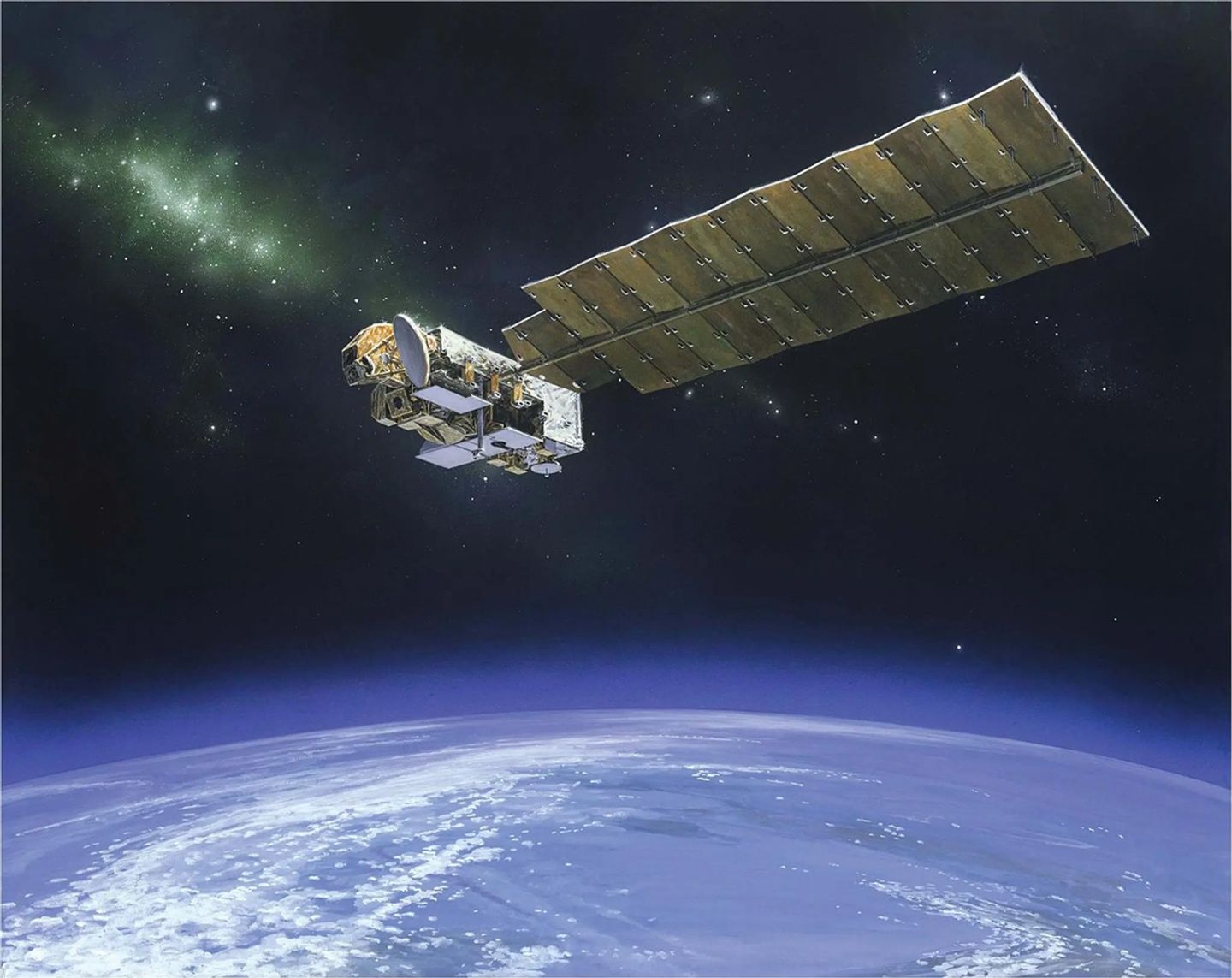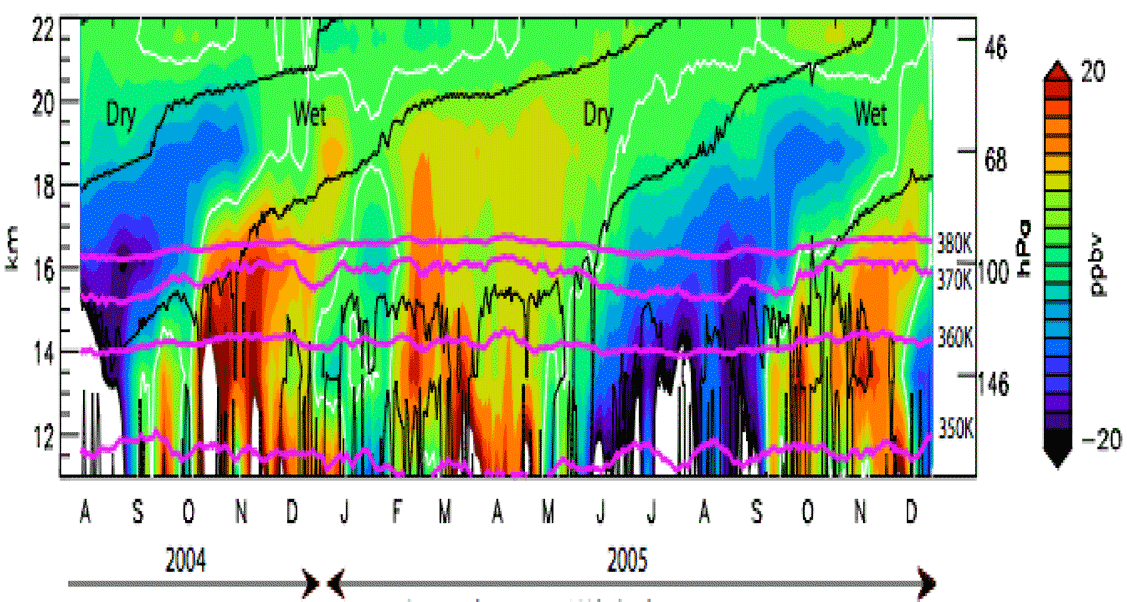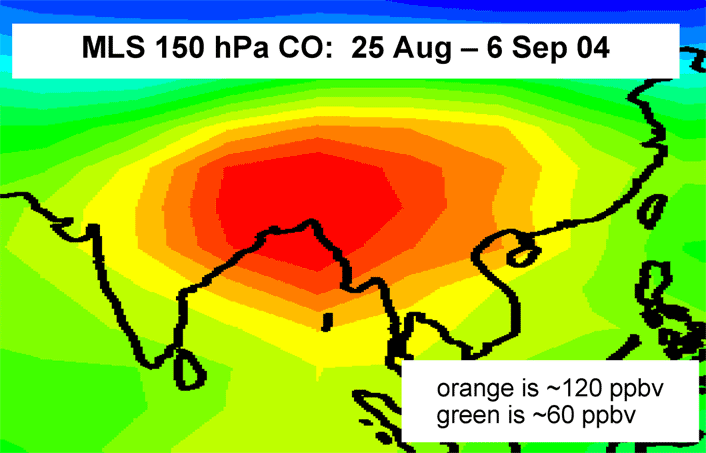Measurement of Carbon Monoxide in Upper Troposphere
Carbon Monoxide (CO) is a signature of pollution and can be transported a long way from its source. Not surprisingly, that transport can be vertical as well as horizontal. These Aura's Microwave Limb Sounder (MLS) images show how CO detected in the lower stratosphere can tell us something about where convection is occurring.
The lofting of CO plumes into the lower stratosphere during a year and half of observations. The variation in CO with altitude shows that convection pushes the CO to about 16 km and then it moves more slowly into the lower stratosphere - which causes the CO plumes to tilt with eight.
The hot-spot of CO over south-east asia shows that CO is lofting into the lower stratosphere during the asian monsoon season. Interestingly enough the hot-spot is not over the sub-continent but at the edge of the Himalayan plateau where the convection can reach higher into the stratosphere.
- Detection of CO pollution lofted to the upper troposphere and temporarily 'trapped' in anticyclone over south Asia
- Detection of 'CO tape recorder' in lower stratosphere which is linked to seasonal changes in biomass burning
- Reproduced by Global Methane Initiative (GMI) chemical transport model
Carbon Monoxide Perturbation
Deep Convection Zone
6.28.06
MLS
Aura’s Microwave Limb Sounder (MLS) instrument uses microwave emission to measure stratospheric temperature and upper tropospheric constituents. MLS also has unique capability to measure upper tropospheric water vapor in the…
Learn More




























